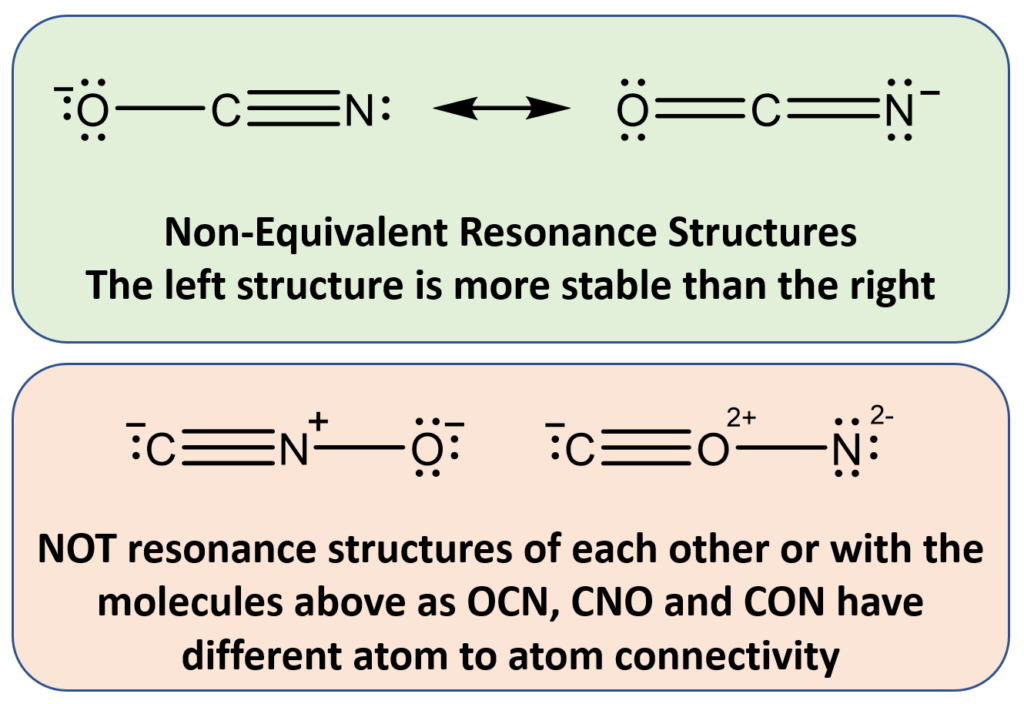For an introduction to resonance please see here. In previous examples, we have mostly seen equivalent resonance, but there are definitely times where one resonance structure is not considered as good as another resonance structure.
A common example of non-equivalence resonance is OCN–. In OCN– the negative formal charge can be on either the O or N.
Although both of the above structures are possible, one of them is better than the other.
As you can see we use the same steps for ranking resonance structures as we would when determining the best Lewis structure. Remember that resonance structures are just Lewis structures with the same atom to atom skeleton connectivity. For example, both of the OCN- structures above are resonance structures of each other, however, if we changed the atom connectivity so the molecule was CON- or CNO-, we would have different molecules and no longer resonance structures.

| What is your confidence level on this material after reading this section on bonding in 2D (Lewis and Resonance)? Choose either Green (confident), Yellow (somewhat confident), Red (not confident). |
|---|